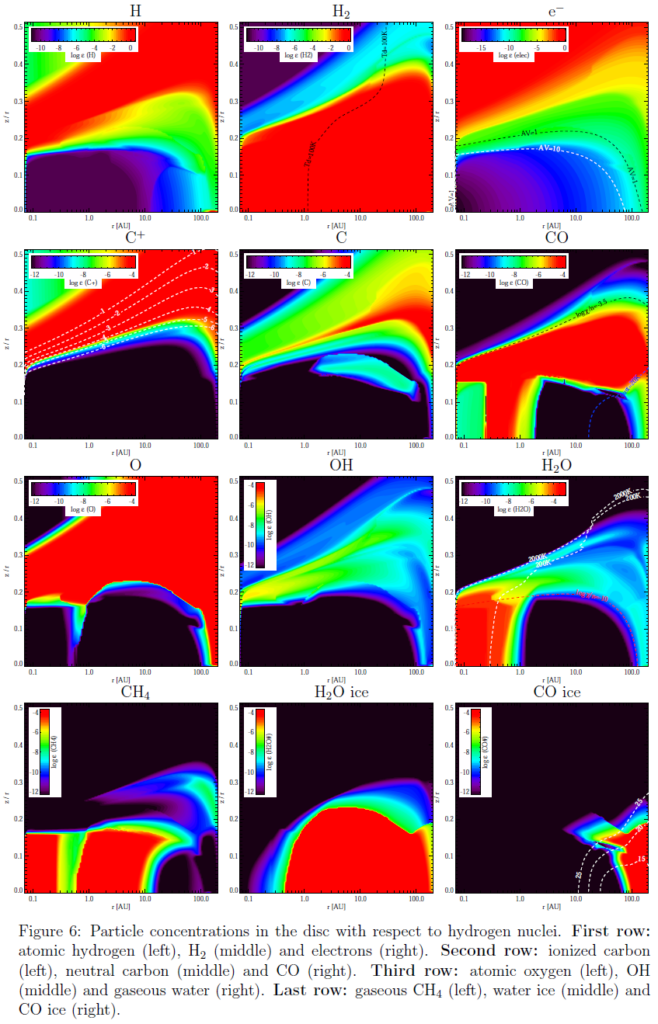
Figure 6 shows some results concerning the chemical composition in the disc. The disc is mainly made of H2, however the uppermost layers are atomic, or even fully ionized (by X-rays). The free electrons are donated by H+ in the uppermost layers, by C+ in a transition layer, then by a small fraction of metal atoms not bound in refractory dust materials like Fe+, Mg+ and S+. In the deeper layers, the free electron concentration is very small, about 10-12 to 10-20, creating a “dead zone”, where the few electrons created by cosmic rays are absorbed by PAH particles, creating PAH–. The chemistry shows a typical PDR/XDR like layered structures, with transitions H → H2, C+ → C → CO → COice, and O → OH → H2O → H2Oice. However, in the close and very dense midplane, conditions are more like in planetary atmospheres, with very abundant CH4, CO2, H2O and NH3 gas, but not so much CO. The CO-poor midplane may be an artifact of the assumption of chemical equilibrium, because the chemical relaxation timescales here (and only here) can exceed the age of the star.
The chemistry in the outer layers can show quite unusual pathways as compared to standard astro-chemical models for interstellar clouds, because the the dust settling can lead to quite dense yet almost dust-free local conditions, where one of the most important reactions: dust + H + H → dust + H2 becomes very slow because of the lacking dust surface.
The model predicts the snowline (transition between gaseous and frozen water) to be situated at about 0.5 AU, but viscous heating in the midplane (ignored in this model) might shift it further outward. Anyway, at higher altitudes, the snowline bends and becomes almost a horizontal line, because the water ice is UV photo-desorbed in the directly irradiated layers.
Return to:
1. Spectral Energy Distribution
2. Disc Shape and Dust Settling
3. Gas and Dust Temperatures
Go on with:
5. Predicted Continuum Observations
6. Predicted Line Observations